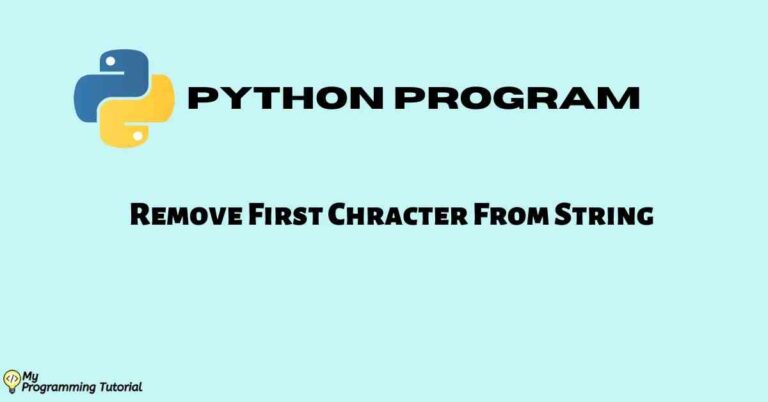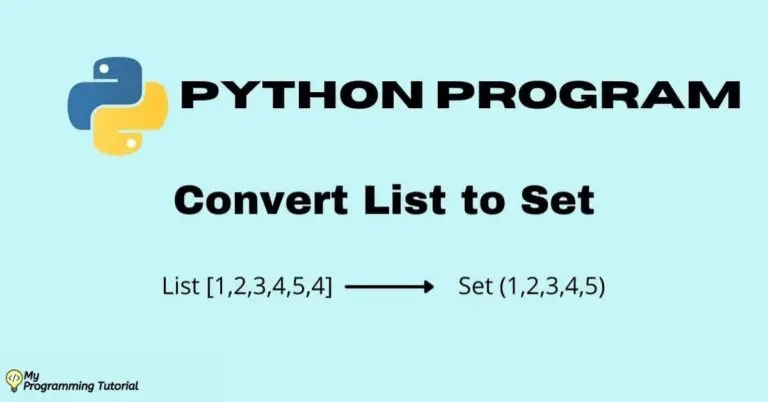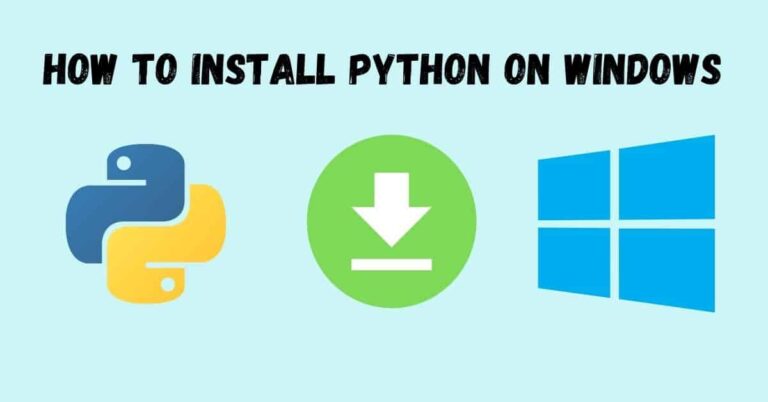How to convert Set to List Python (In 7 Ways)

In this article, we will be solving a problem statement for how to convert set to list Python. We will be discussing the steps and python methods required to solve this problem. There are a lot of ways to convert set to list, out of which we will be looking at the top 7 ways.
Table of Contents
What is a list in Python?
A list is one of the four in-built data types in Python. A list in Python is a data container that stores data elements, that can be mutable, ordered, can be duplicated within the list. The list is created by placing all the elements within the square brackets and separated by commas.
Example:-
list1 = [1,2,3,'john',7.5,3]
What is a set in Python?
A set is one of the four in-built data types in Python. A set in Python is an unordered, mutable, collection of unique elements. The Set is created by placing all the elements within the curly brackets separated by commas.
Example:-
set1 = {1,2,3,'john',7.5}Difference between List and Set in Python
List | Set |
The list allows duplicate elements | Set doesn’t allow duplicate elements |
The list is an ordered sequence | The set is an unordered sequence |
The elements in the list are present in square brackets [ ]. | The elements in the list are present in curly brackets { }. |
Using the list we can implement ArrayList, LinkedList, Vector, Stack | Using the set we can implement HashSet, LinkedHashSet. |
Also Read: 4 Ways to Convert List to Set
How to Convert set to list Python
The 7 Ways to convert set to list in Python are as follows-
Method 1- Convert list to set using Using list() method
The easiest way to convert set to list is by using the python list() method. The list() method takes the iterator such as a set, tuple, dictionary and converts them into a list.
Syntax –
list(iterator)
Iterator – An iterator such as a set, tuple, or dictionary.
Python Code:
Python Code:
# define set
defined_set = {1, 2, 3, 3.5, 'foo'}
# Using list() method to convert set to list
list1 = list(defined_set)
print("Converted list is:", list1)Output:-
Converted list is: [1, 2, 3.5, 3, 'foo']
Method 2 – for loop and append()
By using for loop we will iterator on set and add each element to the list by using the append() method. The append() method adds an element in the existing list at the end of the list.
Syntax for append() –
list.append(element)
Python Code:
# define set
defined_set = {1, 2, 3, 3.5, 'foo'}
# defining empty list
list1 = []
# Iterating set using for loop
for element in defined_set:
# Adding each element in list
list1.append(element)
print("Converted list is:", list1)
Output
Converted list is: [1, 2, 3.5, 3, 'foo']
Method 3- Using list comprehension
In Python list comprehension is used for creating a list based on the values of other iterators such as list, set, tuple, dictionary. To know more about list comprehension you can read here.
Python Code:
# define set
defined_set = {1, 2, 3, 3.5, 'foo'}
# Using List comprehensionhttps://myprogrammingtutorial.com/
list1 = [element for element in defined_set]
print("Converted list is:", list1)
Output:-
Converted list is: [1, 2, 3.5, 3, 'foo']
Also Read: 4 ways to count occurrences in list Python
Method 4- Convert set to list using dict.fromkeys()
In this method, we will be using the dictionary fromkeys() method. To know about dict.fromkeys() method you read here.
Python Code:
# defined Set
defined_set = {1, 2, 3, 3.5, 'foo'}
# Using dict.fromkey()
list1 = list(dict.fromkeys(defined_set))
print("Converted list is:", list1)
Output:-
Converted list is: [1, 2, 3.5, 3, 'foo']
Method 5- Using Map and lambda function
In python lambda function is an anonymous function i.e a function with no name. It is a small function that can have any number of arguments but has only one expression.
Syntax-
lambda argument(s): expression
To know more about the lambda function you can visit here. To convert set to list we used map function with lambda.
Python code:
# defined Set
defined_set = {1, 2, 3, 3.5, 'foo'}
# USing map and lambda function
list1 = list(map(lambda l: l, defined_set))
print("Converted list is:", list1)Output:-
Converted list is: [1, 2, 3.5, 3, 'foo']
Method 6- Unpack set inside the parenthesis
In this method, to convert set to list we unpack the set inside the list literal. We need to use the * symbol which represents all elements in the set.
Python code:
# defined Set
defined_set = {1, 2, 3, 3.5, 'foo'}
# Unpack the set
list1 = [*defined_set]
print("Converted list is:", list1)Output:-
Converted list is: [1, 2, 3.5, 3, 'foo']
Method 7- Using sorted() method
We can also use the sorted() method to convert the list to set in python. The only disadvantage of this method is that it returns the ordered list and the set should either have numerical (int, float) values or strings. We cannot store numerical values and strings at the same time
Python code:
# defined Set
defined_set1 = {'b', 'c', 'a'}
defined_set2 = {1, 2, 3, 4.5, 3.7}
# Using sorted Function
list1 = sorted(defined_set1)
list2 = sorted(defined_set2)
print("Converted List 1", list1)
print("converted List 2", list2)
Output:-
Converted List 1 ['a', 'b', 'c'] converted List 2 [1, 2, 3, 3.7, 4.5]
Conclusion
Hence we have seen how to convert set to list python in 7 different ways. We can convert set to list in python by using list(), for loop, using list comprehension, lambda function, sorted function, and by unpacking set inside parenthesis.






